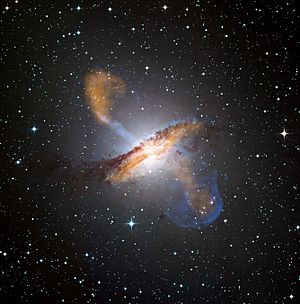Reva Williams facts for kids
Quick facts for kids
Reva Kay Williams
|
|
|---|---|
| Nationality | American |
| Education | Malcolm X College A.A. in liberal arts, 1977 Northwestern University BA in astronomy & physics, 1980 Indiana University Bloomington MA in astrophysics, 1990 Indiana University Bloomington Ph.D. in astrophysics, 1991 |
| Known for | First person to successfully work out the Penrose process First Black American woman to receive a PhD in theoretical astrophysics Frame-dragging Gravitomagnetism |
| Scientific career | |
| Fields | Astrophysics |
| Institutions | University of Toledo University of Florida Bennett College |
| Thesis | Extracting X-rays, gamma rays, and electron-positron pairs from supermassive Kerr black holes using the Penrose mechanism (1991) |
| Doctoral advisor | Richard H. Durisen |
Reva Kay Williams is a brilliant scientist who studies space and how the universe works. She is known as a theoretical astrophysicist. This means she uses math and physics to understand things like black holes.
Dr. Williams was the first person to figure out how to get energy from black holes. She used Einstein's Theory of Relativity to do this. She is also the first Black American woman to earn a PhD in theoretical astrophysics. Her work helps us understand the universe better.
Early Life and Education
Reva Kay Williams was born in Memphis, Tennessee. When she was six years old, her family moved to Chicago.
She started her college journey at Malcolm X College. There, she earned an Associate degree in liberal arts in 1977. Later, she studied astronomy at Northwestern University, getting her Bachelor of Arts degree in 1980.
Dr. Williams then went to Indiana University Bloomington. She earned both her Master's degree and her PhD there. In 1991, she made history. She became the first Black American woman to get a doctorate in theoretical astrophysics.
Understanding the Penrose Process
In 1991, Dr. Williams published her PhD research. In this work, she was the first to fully explain the Penrose process for black holes. This process describes how energy can be taken out of a spinning black hole.
In 1995, she shared more of her research in a science paper. Her calculations showed that powerful streams of energy, called black hole jets, shoot out from black holes. These jets look like twisting tornadoes made of high-energy light and fast-moving particles. She also found that as black holes spin, they can twist the space around them. This twisting might cause uneven jets.
In 2004, Dr. Williams wrote about her experiences. She explained how important her discoveries were. She also talked about making sure her work was properly recognized.
Career in Astrophysics

After earning her PhD, Dr. Williams received a special fellowship. From 1993 to 1996, she worked at the University of Florida. In 1997, she was a visiting professor at North Carolina A&T State University.
In 1998, she became a professor at Bennett College. She also directed the Center for Women and Science there until 2001.
In 2000, Dr. Williams received a grant to study microquasars. These are small systems with a black hole that pull in matter. At that time, she was thought to be the only Black American female astrophysicist in the United States. By 2004, she was one of the few women worldwide researching black holes.
In 2009, she received another important grant. This grant helped her study the energy and structure of jets from quasars and other active galaxies. These are all believed to be powered by spinning black holes.
Since 2009, Dr. Williams has been a research assistant professor at the University of Toledo. She continues to research how black holes work. She also studies general relativity, the history of the universe (cosmology), and galaxies far away (extragalactic astronomy).
In 2022, Dr. Williams gave a major speech at a conference about astrobiology. This event was put on by the American Geophysical Union and NASA.

